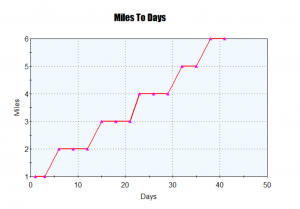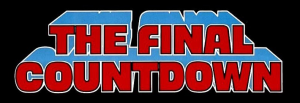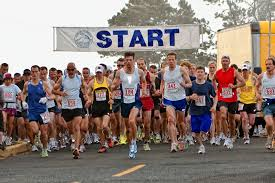Training for Your First Marathon

When I graduated high school back in 2010 I weighed in at 285 pounds, almost all fat. If you would have told me then that I would be running marathons in a few years I would have called you crazy, but I did. In the time after high school I did not do much working out until Fall of 2013 when I found out about the Warrior Dash and decided to start training.
A year later I ran my first half marathon, the Talladega 21000, at the Talladega Super Speedway in Talladega, Alabama. My time for this first run was 2:10, not quite the sought after sub 2-hour half, but not bad considering it was the first race I ever ran. From there I continued to run races with my first full marathon being the Charleston South Carolina Marathon where I finished in just over 5 hours, not bad for someone who weighed in over 285 pounds a year ago. At this point I weighed in at around 175.
Some of you may be asking, what is the point of this story? Well, the reason I wanted to give this introduction is to emphasize the point that anyone, given enough determination, can lose the weight and get fit. Is it easy? No, I am not going to try to sell you some fad diet crash course that is doomed to fail from the start.
So, what’s the secret? Consistency, plain and simple. You are going to make a lot more progress if you do a short three mile run four times a week with a long run mixed in than you are trying to force multiple long runs into a week. The same goes for your diet. Don’t try to starve yourself half the week, the engorge yourself the rest, it just doesn’t work.
Getting Started

You must start in order to see the end results!
The hardest part, by far, is getting started. When you are first starting out always remember, it is easier to get from 1 to 100 than from 0 to 1. Once you establish a base the rest will come naturally. While most plans will give you a distance goal to aim for each week these are one size fits all and are not always the best match. I recommend using your times when you are starting out. What I mean by this is don’t say “I’m going to run 1 mile each day Monday through Friday, then increase by a mile a day each week.” This is a good way to over train and injure yourself, especially when you are first starting out.
When you are first starting I recommend doing 1 mile 4-5 times a week depending on how well your body handles it. If you are hurting by the end of the week skip a run, at this stage the biggest danger to success is a training injury. Be sure you record your time. Continue doing one mile runs until you are able to complete a mile in under 10 minutes. This should be your first goal, not distance, not most miles in a week, but getting to that 10-minute mile mark.
Once you are able to run a mile in 10 minutes increase your runs to two miles and continue to time them. Once you have gotten to the two mile point you should be starting to notice an increase in your stamina, but we are far from done. Depending on your current level of fitness it can take a few weeks to reach this stage, but a slow buildup is going to make the transition easier and help you stick to a new lifestyle as opposed to a fast burnout that ends as quickly as it begins.
Keep timing your runs, once you are able to complete two miles in 18 minutes you are ready for the next stage.
Gaining Momentum

You need to make steady improvements on how many miles you run a day!
Once you can run two miles in under 18 minutes you are really ready to get started. From here increase your runs by another mile. At this stage we can no longer skip runs. Your body should be adjusted now and be able to handle the abuse of 15 miles a week. You can do your runs on any days you like, but you need to be doing 5 three mile runs a week. I personally found it easiest to do them during the week, after work. I would go home, throw dinner on and go for a 3 mile run.
When you first start at the three mile mark you should be able to run three miles in 30 minutes or less. This is the same 10-minute mile goal from before, but it is having to be maintained longer. Right now we are not focused on distance, but rather speed. You should focus on getting your three-mile time down to close to 20 minutes, this works out to just over 6 minutes a mile. This is an ongoing goal, not a milestone. Once you are able to run three miles comfortably you should move on to the next section.
Final Prep

You are almost ready!
Once you are able to comfortably run 15 miles in a week it is time to add in a long run. I recommend doing your short runs during the week and the long run on Saturday, this gives you Sunday to recover before going back to work. When you are first starting out with long runs stick with the theme of the plan and don’t overdo it.
I recommend starting with a 6 mile long run, but you can start with 9 if you want. From here you should work on getting your time down below 10 minutes a mile again. Aim for around 8 minutes a mile on your long runs and increase by 3s if possible. For example, if you start off with a 6-mile long run keep doing it every week until you can complete you run in less than 50 minutes, then increase your run to 9 miles, then 12. You can make your long runs as long or as short as you want, but remember, you are going to get out what you put in. If you only do 6-mile long runs and never push past the 10 minute mile mark your marathon time is not going to be great, but you will finish. On the other hand, don’t overdo it with the long runs. You should generally cap a long run at 21 miles, but the longest I ever do is 15.
Don’t try to run the full marathon distance before the actual race, but I would recommend trying to hit the wall. For those who don’t know, the wall is the point in a marathon when you reach a new level of tired, and it comes on all at once. I hit my first wall at 18 miles in and it almost killed me. I dropped out of my pace group and had to stop because I was dry heaving. This kept going until the end of the run. The next time I hit the wall was at mile 21 of my next race and it was no where near as bad as the first one, I didn’t even have to stop The second time.
Additional Information
If you are like I was when I started out, then you will undoubtedly feel a little discouraged during the first stages because you will not be losing as much weight as you may want. Take my advice, however, and do not try to force things. If you over train and under eat you will fail. Motivation is fleeting no matter how much you want something, so this can be discouraging. If this is the case, I recommend trying a workout supplement. While there is no magic pill that is going to make you lose weight there are several that will help speed things along if you are doing what you are supposed to. You can check out some of the better ones I recommend here.
You should also invest in a good pair of running shoes. This one is critical since you won’t make it very far in a run if you have blisters on your feet. Resist the urge to run to the nearest supermarket and buy a cheap pair. Cheap running shoes won’t hold up to the abuse they need to. Personally I always run in ASICS, but any of the big brands should be fine. When looking for shoes try to find a pair that keeps your ankles aligned, so if you are flat footed like I am you will want something to help compensate. You can also get insoles for this, but they tend to slide around. I recommend finding the right shoe if possible rather than making the wrong shoe work. Also, be sure you go for dedicated running shoes, not basketball or tennis shoes. These shoes are not made to handle long distance runs on pavement and will wear out quicker, especially basketball shoes. The soles on these are made with softer rubber to grip the floors of the court better. This is great for their intended use, but traction is not as much of an issue on pavement, so you need a shoe with a hard rubber bottom sole to resist wear and a soft rubber mid sole to act as a cushion.
Race Day

You did it! Now its time to run for real!
You did it, you have trained for months, gotten into shape and are finally ready to run your first marathon, what now? Ideally you signed up for it months ago when prices were down, but if not most will let you sign up up to the morning of the run. First, never wear new shoes on race day, always wear a broken in pair. Be sure to show up early so you can have time to park and get your packet. These usually have your bib and a few goodies as well as your shirt. As a rule, don’t wear the shirt until after you have finished the race. It is bad luck to wear a race shirt during the race unless you are a volunteer. At the same time it is considered rude to wear a shirt for a race you did not complete.
Once you have your packet find a pace group if they are available. This will help more than you realize since it is all too easy to start a run at your training pace and be burnt out before the halfway mark.
Be sure to bring water, snacks don’t hurt either. Trust me, if you don’t bring water and food you are going to have a hard time making it between aid stations. What is given out at the aid stations varies by race, but they will always have water and usually some type of carb gel at some stations. Most half and full marathons will also hand out snacks during and after the run.
It’s always a good idea to carry a few carb gels with you as well. These little packets are a thick gel you can slurp up while running. They don’t taste great, but they give you that much needed boost during the run. These can upset some people’s stomach though, so never try them for the first time on race day. A few more things to carry if you are like me and don’t mind the extra load are headphones, some type of anti-inflammatory, body glide, and icy hot. Personally I like to run in cargo shorts. Most people use a fanny pack, but never try to run a race that long with a backpack, especially if you didn’t train in it. You will get blisters and probably wind up bleeding.

I am an avid fitness maniac and I like to do a lot of cardio as well. That is why it is mandatory for me to do jogging.
I like to do it in in the mountains and on a treadmill.
Your advices on how to be prepared for a marathon are very good and I can use it even though I a not planning to do a marathon. As a second thought, why not, indeed? 🙂
Thank you for the great explanation.
Hey thanks for the feedback. I think mountain training is amazing, I have done a few runs up mountains here in Washington State. I even had to run to the base of the snow at Mt.Rainer last summer because I got all the way to the bottom and realized I left my keys when I changed out of my snow gear. I hope you can take my advise and use it to your benefit.
Good Luck to you.
-Kenny
I ran my first marathon in 2014 and I trained the whole year for it. I was in really bad shape when I started and with consistent training I was ready for the race, I ran the whole way without stopping at 3hrs 26 mins. unfortunately I stopped training after the marathon as I thought Id take a break. now its been a while, I should get back on it
Hey Kent thanks for sharing! Marathon running is crazy. I think anyone who can compete in and finish a marathon deserves some props. I would recommend you get back on the running train, catch the running fever again, its hard to get back into it but once you are it is so contagious. Don’t rush right back into it, take your time, don’t hurt yourself
Good Luck,
-Kenny